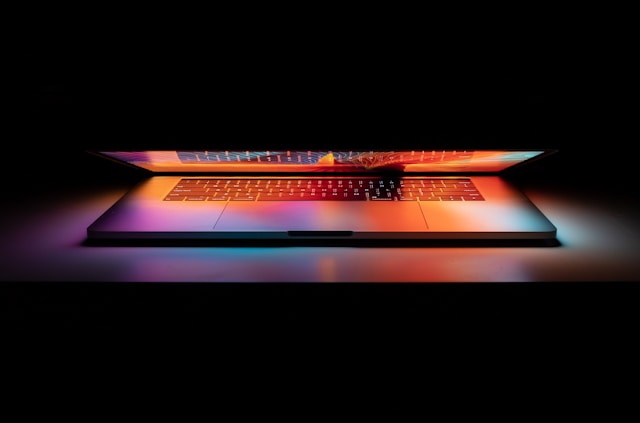We’ve all been there. You’re in the middle of something important – a video call, a big project, or just trying to relax with a movie – and your trusty Mac suddenly seizes up. The screen becomes unresponsive, the cursor won’t budge, and that colorful spinning beach ball is mocking you.
It’s frustrating! But don’t worry, in most cases, your frozen Mac doesn’t mean disaster. This article will walk you through figuring out why this happens and the steps you can take to get your Mac back up and running smoothly.
Table of Contents
Identifying the Freeze Type
If your Mac feels like it’s turned into a statue, everything stops. Your mouse won’t move, you can’t type, and the screen is completely frozen. If you’re having a complete freeze and even your macbook not shutting down, it’s a sign of a serious system issue. You can look for resources online to learn different ways to shut down your Mac or contact a professional if it frequently happens.
Sometimes, the troublemaker is just one app. You might be working on a document, and suddenly, it refuses to do anything, while other programs seem fine. This is called an “application freeze,” and it’s often easier to fix.
Not every Macbook problem is a full-blown freeze. Instead, you might notice things have become painfully slow. Apps take forever to open, tasks take unusually long, and that spinning beachball becomes a regular sight. This severe slowdown is definitely a sign something’s not right with your Mac.
Also read: Top Digital Trends In Real Estate Industry
Why Does Your Mac Keep Freezing?
There are several common culprits behind a frozen Mac. Let’s break them down:
- Overworked Memory (RAM): Your Mac’s RAM is like its short-term memory. When you run too many programs or have tons of browser tabs open, your Mac gets overwhelmed. It’s like trying to juggle too many things at once – eventually, something’s going to drop.
- Clashing Software: Sometimes, different apps or even outdated versions of your operating system don’t play nicely together. These conflicts can lead to unexpected glitches that freeze your system.
Also read: How Can Maximise Solar Panel Performance
- Running Out of Space: Your Mac’s hard drive is where it stores everything. When it gets too full, your Mac struggles to find room to work, leading to slowdowns and potential freezes.
- Hardware Problems: While less common, a failing hard drive or faulty memory stick can cause serious issues, including freezes. These usually require professional help to diagnose and fix.
- Minor OS Bugs: Even the mighty macOS isn’t perfect. Temporary glitches can sometimes pop up, causing unexpected behavior like freezing. Often, a simple restart helps clear these up.
Also read: Top Uses of 5G Technology in Recent Times
Troubleshooting Steps
Now that we know some of the reasons your Macbook might be freezing, let’s get it back into action! Try these steps in order, as the simplest solutions are often the most effective.
Force Quit (for application freezes)
If a single app has become the source of your Macbook’s woes, it’s time for a force quit. Press the Command + Option + Escape keys simultaneously.
Also read: The Importance of Email Marketing Campaigns for Your Business
This will open the Force Quit window, where you’ll see a list of your running apps. Locate the unresponsive one, select it, and then click the “Force Quit” button to give it the boot.
Free Up Storage Space
Your Macbook needs some breathing room to function properly. Check how much free space you have left on your hard drive. Ideally, you should aim to keep at least 10-15% hard drive space free.
If you’re running low, it’s time to do some decluttering. Uninstall apps you no longer use, delete large files taking up space, or consider moving some of your data to cloud storage solutions like iCloud or Dropbox.
Activity Monitor
Activity Monitor, found in your Applications/Utilities folder, gives you a peek under the hood of your Mac. It shows you everything running in the background. Look for processes using a lot of CPU or memory.
Be especially wary of unfamiliar processes that are gobbling up resources. You can quit processes from Activity Monitor, but use caution – quitting something critical could cause more problems.
Also read: The Importance of Task Management Tools
Update Your Software
Software updates aren’t just about new features; they often contain important fixes for bugs and performance issues. Both Apple (for macOS) and individual app developers regularly release updates.
Make it a habit to check for updates frequently (go to System Preferences > Software Update). Install any available updates to keep your Macbook running smoothly.
If the above steps don’t help, you might have a hardware problem. Apple Diagnostics (tool built into your Mac) can help check this. Consider seeking professional help for hardware issues.
Also read: Top Ideas To Maintain Gym Equipments
Bottomline
While a frozen Mac can be incredibly frustrating, remember that most issues are fixable. By understanding the potential causes and following these troubleshooting steps, you’ll get your Macbook back in working order.
If you find freezes happening frequently, or the solutions here don’t help, it may be time to dig deeper or consult an Apple technician. Don’t get discouraged – with a little patience, you can keep your Mac running smoothly.

